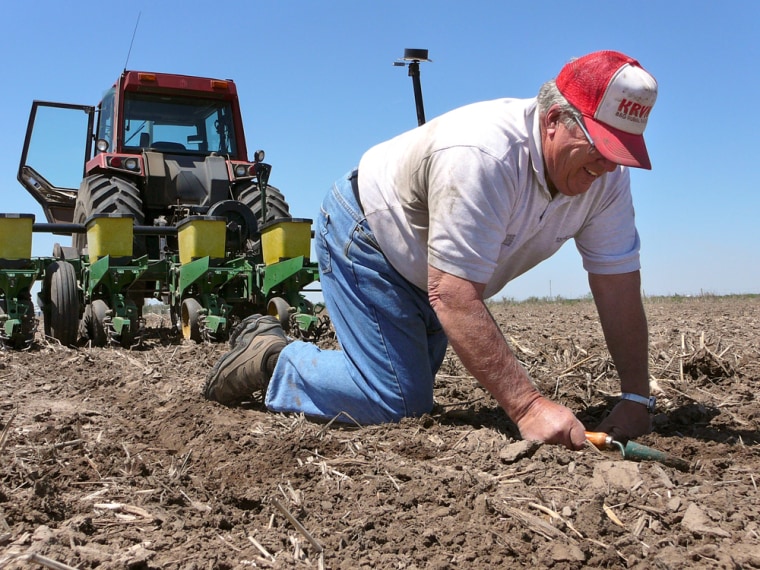As the federal government prepares to send tens of millions of dollars to farmers in Plains states deemed to have suffered from an ongoing drought, critics say the region is not as dry as some claim.
Kansas farmers and ranchers could get $121 million of the $3 billion in disaster aid available for losses in 2005, 2006 and this year, according to an analysis by professors at Kansas State University and the University of Nebraska-Lincoln. In Nebraska, they could receive around $73 million.
"The more they cry wolf, the government listens and gives them payments," said Ernie Kuhl, who has been Harlan County's official weather observer for the National Weather Service for 28 years. "It's been dry, but it's not really been a drought."
Kuhl — who records precipitation in his backyard rain gauge and sends the information to be recorded by weather service officials — is adamant there has been no drought in the county despite it being labeled a "disaster area" in recent years.
Precipitation above par
Kuhl said normal precipitation for Harlan County is about 24 inches a year. In 2005, it received more than 25 inches; in 2006, more than 27, according to his records.
The Standardized Precipitation Index backs that up. Nebraska and Kansas received normal precipitation in 2005, and with the exception of one region in each state that was moderately dry, they got normal precipitation the following year, according to the index, which measures deviations from a precipitation baseline using historical data.
Information used for the index comes from the National Climatic Data Center and is mapped by the National Drought Mitigation Center at the University of Nebraska-Lincoln.
The precipitation record contrasts sharply with the picture of oppressive drought conditions painted by farm-state politicians as they pleaded for drought relief dollars and called it long overdue once approved.
"For too long, South Dakotans have had to wait for drought assistance," Sen. John Thune, R-S.D., said after Congress OK'd the $3 billion in disaster aid.
President Bush had resisted the disaster assistance, calling it unnecessary in light of a federally subsidized crop insurance program his administration described as a generous safety net. It was designed to eliminate the need for the type of assistance that was approved. Now, farmers essentially have two nets.
'Farm the crop insurance'
Planting carefully for dry conditions is not the norm, as many farmers prefer to "farm the crop insurance," said Orleans farmer Bill Horwart.
Instead of rotating crops or leaving ground unplanted — practices that can help boost productivity during drier spells — many plant the same thing year after year, he said. They then rely on crop insurance payments triggered by crops with poor yields that are blamed on drought, he said.
But defining drought is far more complex than simply looking at rainfall records, some argue.
For example, a widely used measure of drought that takes into account factors besides precipitation shows that breadbasket states South Dakota, Nebraska and Kansas were scorched by drought during key growing months in 2006, though not so much in 2005. Precipitation is just one of several criteria used when crafting the popular U.S. Drought Monitor map.
Bradley Lubben, an agriculture economist at University of Nebraska-Lincoln, predicted much of the disaster aid will go to dryland farmers, not irrigators, who are often able to keep their yields closer to normal during dry periods by pumping water.
Ken Bantam is one such farmer. He farms in Harlan County, pegged by government officials as a drought "disaster" area last year, and has done fine relying on precipitation.
"If we can get one or two inches in the summer we can get a pretty good crop," he said.
